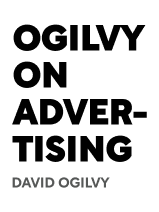

This article is an excerpt from the Shortform book guide to "Ogilvy On Advertising" by David Ogilvy. Shortform has the world's best summaries and analyses of books you should be reading.
Like this article? Sign up for a free trial here .
What is international advertising? How does it differ from domestic advertising?
International advertising refers to any advertising that takes place in other countries. Other countries have different rules, laws, and standards that make advertising different in those countries.
Read more about international advertising and how advertising works in different countries.
International Advertising
At the time David Ogilvy wrote his book, approximately half of the world’s advertising was in the U.S., and the best agencies in many countries were American. Things were starting to change, however—international advertising was starting to compete with and in some cases surpass America’s.
Take a look at these differences between international advertising between countries:
- Britain. British commercials rarely used slice-of-life and talking heads and were usually less brash than American commercials. They also tended to be more entertaining and low-key. No one treated buying a product like a life-or-death decision, so advertisers had more freedom to make trendy or funny commercials. According to Bill Taylor, Ogilvy’s partner, Britain produced the best advertising in the world. As a result, British copywriters were valuable in the U.S.
- France. French advertising tended to be enchanting, smart, and beautifully illustrated. French advertisers didn’t use research, so they could create work that appealed to the upper classes rather than the general public.
- Germany. German advertising tended to focus on magazines because there was limited television time. Germany also faced an additional challenge: a shortage of qualified professionals. When Ogilvy visited Germany, he found the agency atmosphere similar to New York’s, but he thought some of the ads were ugly.
- Belgium and Sweden. These countries didn’t allow advertising on TV, so the only options were magazines and newspapers. Despite this focus, the advertising quality wasn’t high.
- Latin America. Brazil’s José Fontoura was up-and-coming.
- South East Asia. South East Asia was also quickly improving its advertising. For example, when Ogilvy offered a prize to the best Ogilvy & Mather office, Bangkok won by using a bamboo flute instead of a Western jingle in a Thai advertisement.
- Australia. Australian advertising was improving. It was more influenced by the U.S. than Britain.
- New Zealand. Most of the top talent in New Zealand had left and gone to work in other countries.
- India. Indian agencies knew a lot about advertising but with some exceptions, didn’t seem to be able to apply it. They had some unique challenges—they needed to advertise in 12 languages, most of the population was illiterate, and the average person earned $5 a week so was unlikely to buy products even if advertising reached them.
- Kenya. Like India, Kenyan ads had to be written in multiple languages (nine) and much of the population was illiterate. Additionally, people earned $10 a week so didn’t have a lot of disposable income to spend on the products they see in ads. Most advertising was via radio (there were only 30,000 TV sets in the country) and contests and scholarships worked well. Also, advertising needed to be tribally appropriate—for example, the Kikuyu see fish as snakes, so advertising cooking supplies with a fish recipe would be ineffective.
- The Soviet Union. There wasn’t much advertising in the Soviet Union besides campaigns for causes, but there was a state-owned advertising agency. Foreign companies were permitted to advertise industrial products.
- Hungary. Hungary had several agencies that advertised on TV, in magazines, and in newspapers.
- Czechoslovakia. There were two Czech agencies and they used TV, radio, magazines, and newspapers.
- Poland. Poland had an agency that was mainly made up of bureaucrats.
- Romania. Romania had one agency and consumer products were heavily advertised.
- China. There was no advertising in China until 1978 (until then it was considered evil). Radio was the most important medium—there were communal speaker systems that broadcast ads twice a day and reached 75% of the population. Chinese print ads looked like specification sheets and local newspapers contained less than a quarter of ad content. TV ads were mainly for industrial products. There were also magazines and billboards in certain areas. There were 67 agencies, some of which advertised Chinese products in other countries, and some of which advertised foreign products in China.
International Campaigns
There’s often conflict between multinational headquarters and local agencies about campaigns. Multinational advertisers often want to use the same materials worldwide. Local agencies usually want the opposite. Here’s how that works for international advertising.
There’s some merit to both approaches. Often, while the local agencies claim that their market is different and they don’t want to give the impression they’re just puppets, their real concern is their self-respect—they don’t want to use a campaign they haven’t come up with themselves.
The best way to determine what will work best is by testing. (If you can’t test in a particular country, extrapolate from nearby or similar countries you have tested.) Usually, international campaigns do just fine worldwide—for example, the Esso tiger worked in over 30 countries. Just make sure to adapt the campaign to the local culture if necessary.
As you can see, international advertising can be equally as powerful.

———End of Preview———
Like what you just read? Read the rest of the world's best book summary and analysis of David Ogilvy's "Ogilvy On Advertising" at Shortform .
Here's what you'll find in our full Ogilvy On Advertising summary :
- What the "father of advertising" has learned from his decades' of experience
- How to craft easy-to-understand ads that work
- The 6 pioneers of the advertising industry






